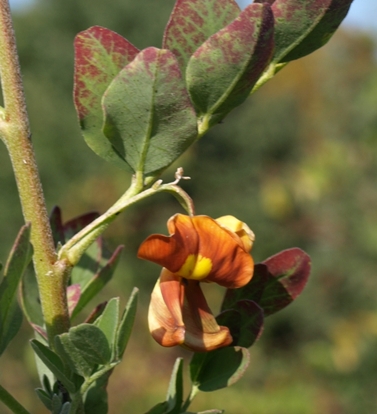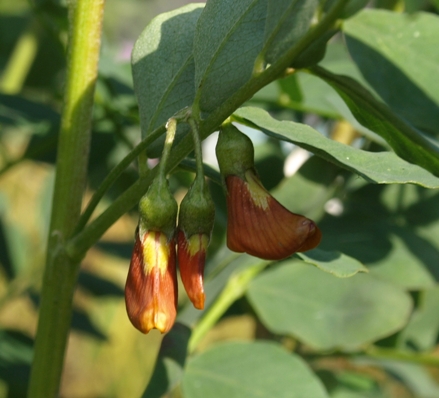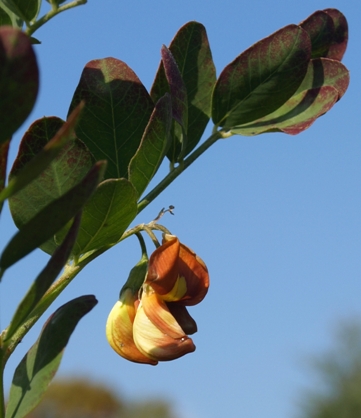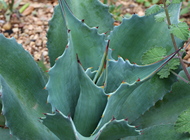 |
Colutea orientalis |
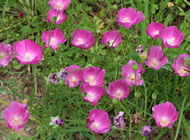 |
| Common name |
bladder senna |
| Family |
fabaceae |
| Life cycle |
shrub (Z5-7) |
| Flowers |
copper/yellow (autumn) |
| Size |
6' |
| Light |
sun |
Not sure about the species ID of this one - perhaps it should be classified as Colutea x media, whose description fits. For now, I'll leave it up under the name by which its seed was identified. It survived its first winter in our garden, and proceeded to grow into a large bushy plant in its second year. But it showed nothing but mid-green compound leaves through the season - until late October. I'd stopped actually looking for flowers, but I happened to walk by while collecting seed, and spotted some of the coppery orange buds. Further inspection also turned up some opened flowers, which are two-toned with yellow accents. In the following years, flowers appeared much earlier: by late May the shrub is ablaze. These flowers are followed by inflated seed pods, but these occur only sparsely on our plant, perhaps because it is not particularly self-fertile. I finally spotted a few in its fourth year of life.
|
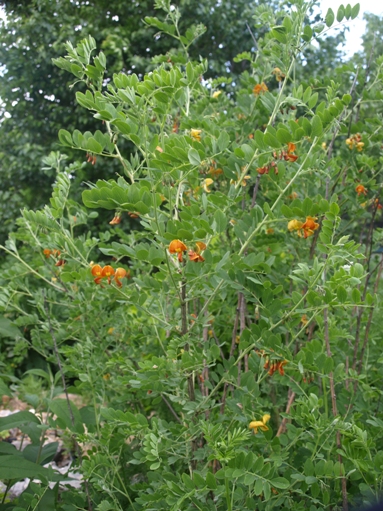
| | Lots of flowers by late May/early June |
| 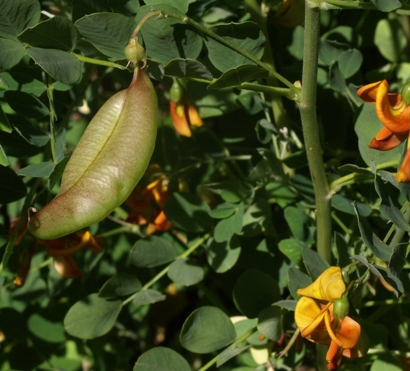
| | Almost comically balloonish pods |
|
We left this plant behind in our Pennsylvania garden (and wish it well); we don't grow it in Houston. About my plant portraits
PlantLinks to other web pages about Colutea orientalis
Visitors to this page have left the following comments| Refugee | May 17, 2011 | I have taken a heel cutting and found that it flowered in the second season.
Also if the seed is left on the plant over winter it germinates readily without sandpapering. Stratify them in a dry container in a 4 star freezer for a couple of weeks if they are harvested at the end of summer.
|
- Seed from '06 trade. Sandpapered, baggy 70F (8w; 50%G, 8d-7w). Several additional rounds of scarification were necessary to attain reasonable germination. Warmer conditions did not appear to aid germination
- Same seed as above. Sandpapered, soaked 1d, baggy 70F (6%G, 5d)
Germinated seeds prone to rotting - found that placing seeds above soil, with only radicle in soil, gave better results.
I welcome comments about my web pages; feel free to use the form below to
leave feedback about this particular page. For the benefit of other visitors
to these pages, I will list any relevant comments you leave, and if
appropriate, I will update my page to correct mis-information. Faced with an
ever-increasing onslaught of spam, I'm forced to discard any comments including
html markups. Please submit your comment as plain text. If you have a
comment about the website as a whole, please leave it in my
guestbook. If you
have a question that needs a personal response, please
e-mail me.
Last modified:
May 30, 2010
Contact me
|


